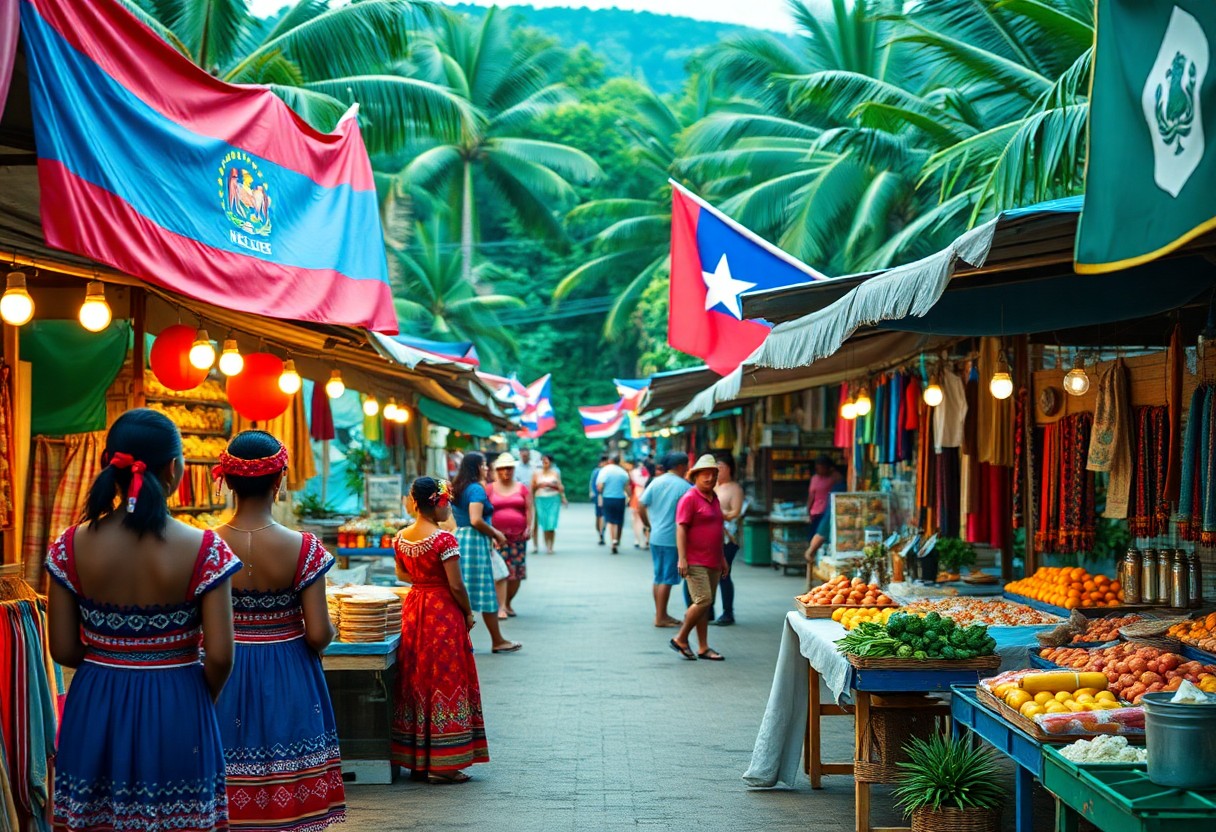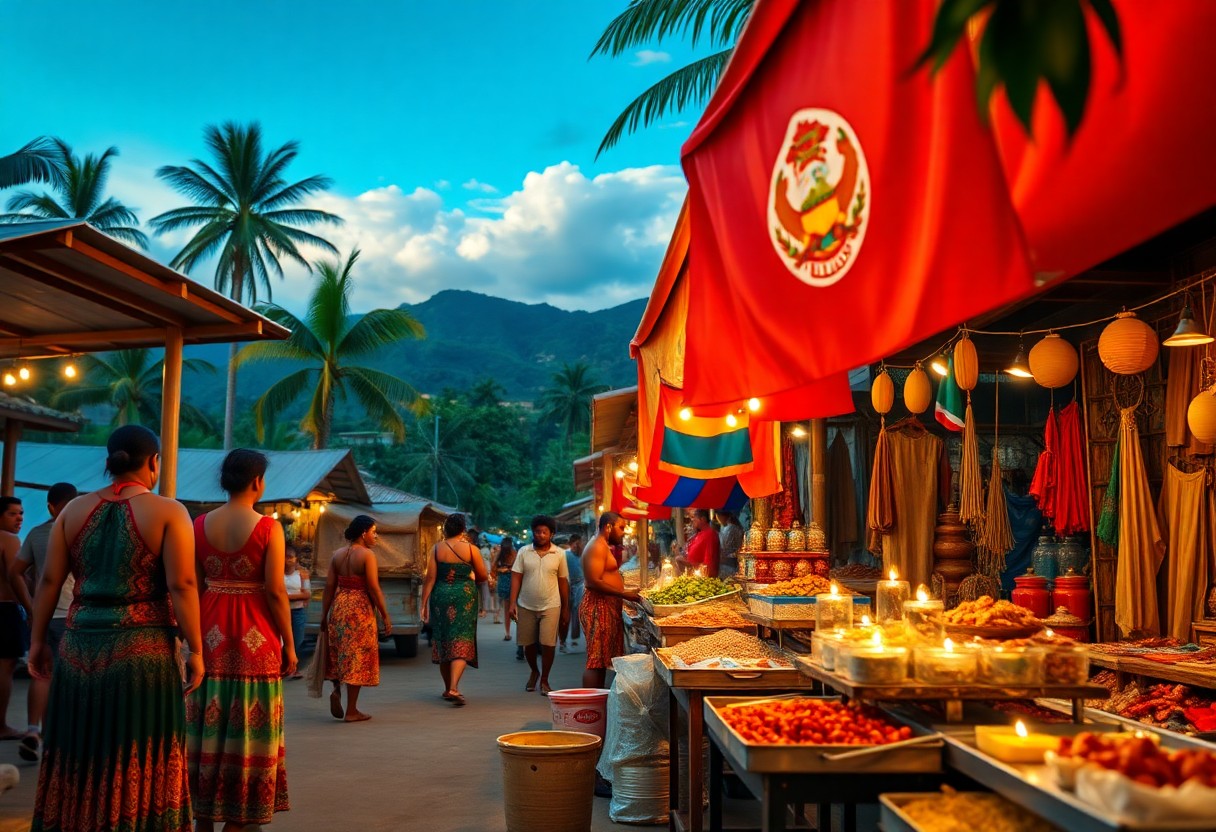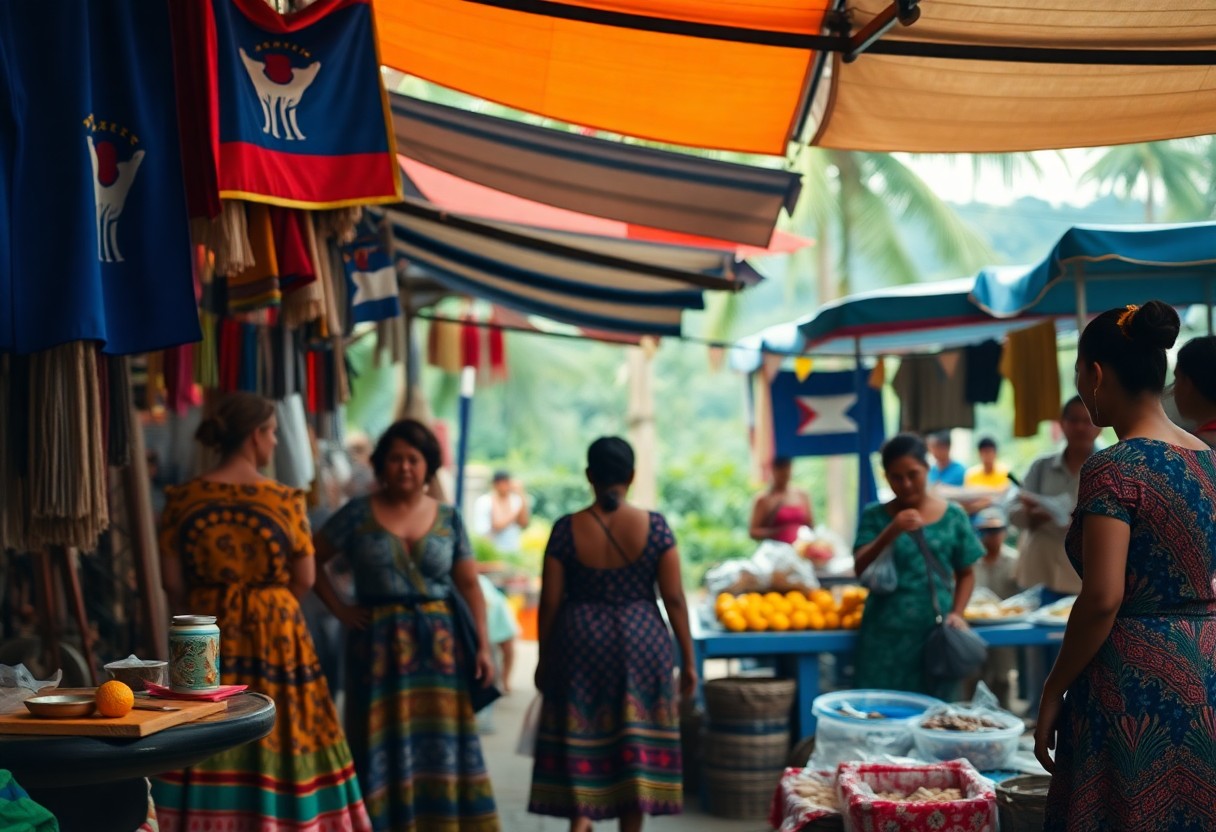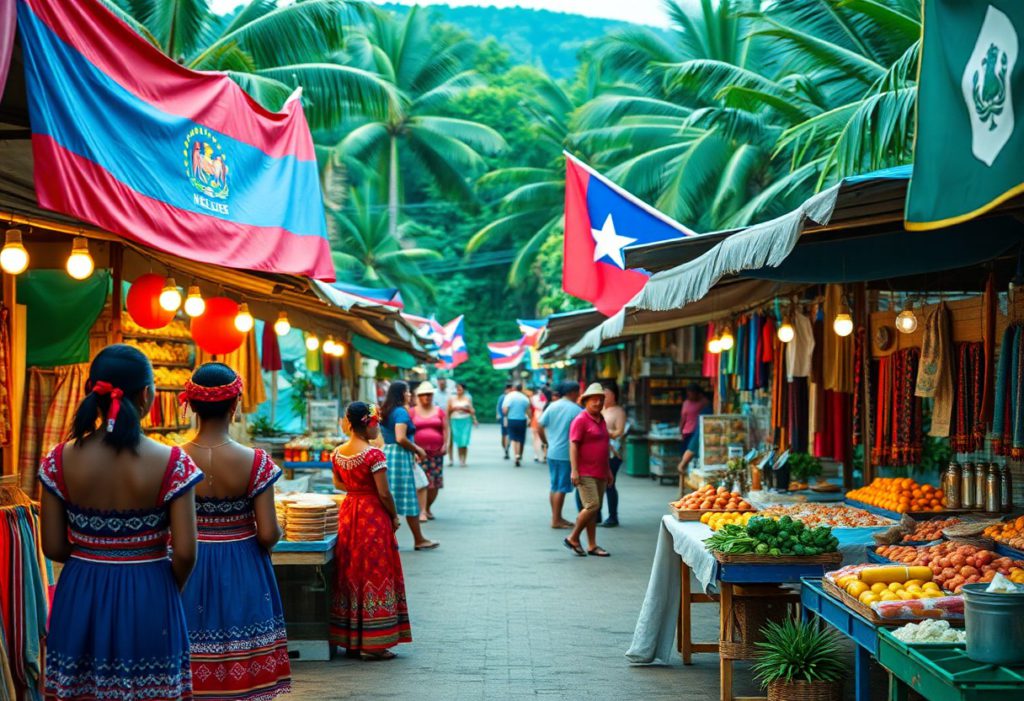The cultural landscape that intertwines Belize and Honduras is both captivating and enlightening, often revealing unexpected nuances. These neighboring countries in Central America share historical connections and unique traits that play a crucial role in shaping their national identities. While both nations exhibit Spanish colonial influences, Belize shines with its distinct English-speaking heritage, marking a clear departure from Honduras. As you journey through these regions, you will encounter a rich complex of languages and ethnicities, highlighted by indigenous populations, vibrant Garifuna communities, and a fusion of cultural backgrounds that culminate in an intricate social tapestry. Understanding their unique differences will provide you with deeper insights into the vibrant dynamics of Central America.
Explore the Fascinating Geography and Border Dynamics of Belize and Honduras
Diving into the geographical features of Belize and Honduras reveals two neighboring nations enriched with captivating territorial characteristics. Their geographical positions within Central America offer a unique lens through which to view the region’s diversity, showcasing an array of distinct coastal and inland terrains that significantly influence their national identities and environmental profiles. Each country boasts remarkable geographic elements, ranging from lush jungles to breathtaking beaches, which enhance their natural beauty while also playing critical roles in cultural practices and economic activities that define their societies.
Uncover the Coastal Marvels and Proximity of Belize and Honduras
Nestled against the stunning backdrop of the Caribbean Sea, Belize and Honduras share a maritime border that showcases remarkable coastal landscapes. Belize is famous for its stunning 386-kilometer coastline, adorned with numerous coral reefs and thriving marine ecosystems, attracting nature enthusiasts and adventure seekers alike. Conversely, Honduras features an impressive 820 kilometers of Caribbean coastline, offering a variety of diverse marine habitats that are perfect for exploration. This shared coastal environment not only provides breathtaking views but also underscores the importance of marine conservation efforts in both nations, reminding us of the ecological treasures that lie within their waters.
Examining Land Borders and Their Influence on Regional Relations
The coastal boundaries serve as crucial elements in the territorial interactions of these nations, as Belize and Honduras are strategically located within Central America. You will notice that Belize is bordered by Guatemala to the west and south, while Honduras lies to the southeast, giving rise to a complex geopolitical landscape that affects regional dynamics and cultural exchanges. This unique geographical positioning fosters opportunities for trade and collaboration while also presenting challenges related to border management and security that both nations must navigate.
Moreover, the land borders function as more than just administrative boundaries; they embody significant historical and political narratives. The ongoing territorial dispute between Guatemala and Belize exemplifies notable geopolitical tensions, with unresolved claims that could influence regional stability. These complexities reflect deep-seated historical colonial legacies and ongoing diplomatic negotiations, highlighting the intricate relationships and interactions among these Central American nations that continue to evolve over time.

Delve into the Linguistic and Ethnic Mosaic of Belize and Honduras
As you immerse yourself in the rich linguistic and ethnic landscapes of Belize and Honduras, you will discover that cultural diversity plays a pivotal role in shaping their national identities. The interplay of languages and ethnic groups unveils complex historical narratives that define these Central American nations, offering you invaluable insights into their vibrant social fabric. This exploration of language and ethnicity illustrates how historical migrations and colonial influences have forged distinct identities within each country, revealing the layers of their cultural heritage.
Contrasting Official Languages: English in Belize vs. Spanish in Honduras
One of the most striking differences between these nations is their choice of official languages; Belize proudly claims English as its official language, while Honduras predominantly communicates in Spanish. This linguistic distinction is deeply rooted in their colonial histories, with Belize retaining its British colonial heritage and Honduras reflecting the influences of Spanish imperialism. Understanding these language dynamics not only illuminates their distinct cultural backgrounds but also enhances communication and social interactions within each nation, enriching the experience for both locals and visitors alike.
Diverse Ethnic Composition and Cultural Heritage in Belize and Honduras
At the heart of both nations lies a rich ethnic diversity. Belize is a vibrant tapestry of Creole, Garifuna, Maya, and Mestizo populations, while Honduras features similar yet distinctly composed ethnic groups. You will come to appreciate how these diverse communities contribute to the rich cultural fabric of each country, showcasing a variety of unique traditions, artistic expressions, and social practices that define their heritage.
Furthermore, beyond the visible diversity, it is crucial to recognize that each ethnic group carries profound historical significance. The descendants of the Maya in both countries work diligently to preserve ancient traditions, while Garifuna communities uphold unique cultural practices that have endured the test of time. It is essential to acknowledge how these ethnic groups have historically resisted cultural erasure, successfully maintaining their languages, ceremonies, and social structures despite significant external pressures from modernization and globalization.

Experience the Unmatched Tourism Highlights of Belize and Honduras
The tourism sectors of Belize and Honduras offer unique experiences that captivate international travelers seeking a diverse range of adventures. Both countries boast stunning natural landscapes, rich marine environments, and culturally significant heritage sites that serve as compelling reasons to explore their territories. Belize’s tourism industry emphasizes eco-adventures and marine attractions, while Honduras showcases its archaeological wonders and breathtaking coastal destinations. Each destination provides travelers with distinctive opportunities to immerse themselves in the beauty and diversity of Central America through various lenses and enriching experiences.
Discover the Wonders of the Majestic Belize Barrier Reef
Undoubtedly, the most spectacular marine attraction in Belize is the Belize Barrier Reef, which stretches approximately 190 miles along the coastline. This UNESCO World Heritage site presents unparalleled snorkeling and diving opportunities, offering experiences that are genuinely unforgettable. The reef is home to an astounding variety of marine life, including vibrant coral formations, a wealth of tropical fish, and endangered species such as manatees and sea turtles, making it a true paradise for marine enthusiasts and eco-tourists eager to explore its underwater wonders.
Exploring the Enchanting Bay Islands of Honduras
To uncover the maritime treasures of Honduras, you should venture into the enchanting Bay Islands. These Caribbean islands offer world-class diving experiences and pristine beaches, ideal for relaxation and exploration. Roatán, the largest island, enchants visitors with its rich marine ecosystem and laid-back vibe, making it a favorite destination for travelers seeking both adventure and tranquility.
Due to their strategic location, the Bay Islands provide exceptional marine biodiversity. You will have the chance to experience the world’s second-largest barrier reef system, positioning it as a premier destination for underwater enthusiasts. The islands showcase a unique cultural blend, influenced by indigenous, Garifuna, and international communities. However, potential dangers such as strong currents and marine wildlife exist, so it is essential to engage with professional guides and adhere to safety recommendations while exploring these stunning maritime environments.

Understanding the Economic Landscape of Belize and Honduras
It is vital to acknowledge that Belize and Honduras share intricate economic landscapes, each presenting distinct challenges and opportunities. Belize’s economy is relatively smaller and primarily service-oriented, whereas Honduras heavily relies on agricultural exports. Both countries encounter vulnerabilities in their economic structures, characterized by limited diversification and reliance on external markets. You will observe that their GDP structures are influenced by historical colonial legacies and current global economic pressures, resulting in intertwined yet uniquely challenging economic trajectories that define their growth.
Key Industries and Trade Relationships Shaping Both Nations
With agriculture, manufacturing, and services serving as the backbone of both economies, notable variations in their industrial compositions are evident. Belize excels in producing and exporting sugar, bananas, and citrus fruits, while Honduras leads in coffee and textile production. Understanding their trade dynamics reveals the United States as a primary trading partner for both nations, alongside emerging relationships in regional markets such as CARICOM and Central American economic zones that enhance their trade opportunities and foster economic growth.
The Role of Tourism as a Vital Economic Engine in Both Countries
Behind the economic curtain, tourism emerges as a critical economic driver for both Belize and Honduras. You will discover that Belize’s tourism sector contributes a more substantial percentage to its GDP than Honduras, with eco-tourism and marine attractions playing pivotal roles in attracting international visitors. Analyzing the contributions of tourism reveals the transformative potential it holds for the economic landscapes of both nations.
Tourism serves as a vital economic force for both countries. Belize’s tourism industry generates approximately 40% of its GDP, focusing on marine ecosystems, Mayan archaeological sites, and pristine coastal environments that entice travelers from around the globe. In contrast, Honduras is developing similar strategies, leveraging its archaeological heritage and Caribbean coastlines. The tourism sector not only provides direct employment opportunities but also stimulates ancillary economic activities, paving the way for sustainable economic development in both nations and enhancing community livelihoods.
Challenging Misconceptions: Perceptions vs. Reality in Belize and Honduras
Not every narrative surrounding Belize and Honduras aligns with actual experiences. Your understanding of these countries may be shaped by outdated stereotypes or limited information. Media representations frequently distort the nuanced cultural landscape of these Central American nations, often presenting oversimplified narratives that fail to capture the complex realities of daily life, social dynamics, and the cultural richness present in both countries.
Confronting Safety Concerns and Common Misconceptions
When considering travel to these nations, perceptions of safety can dramatically differ from the realities on the ground. While Honduras may have higher crime rates, Belize is often characterized by relatively safer urban and tourist environments. You will find that specific regions within both countries exhibit varying safety levels, and smart traveler precautions can significantly mitigate potential risks, allowing for a rewarding travel experience that embraces the beauty and culture of the region.
Understanding Cost of Living and Travel Expectations Across Central America
Throughout Central America, you may find your budget expectations pleasantly surprising. Belize tends to be more expensive, primarily due to its developed tourism infrastructure and English-speaking environment, whereas Honduras typically offers more affordable living and travel experiences. Local economic conditions play a significant role in influencing pricing structures, and understanding these differences will empower you to plan your visit effectively and manage your budget wisely.
The perception of travel expenses in Belize and Honduras unveils intriguing economic contrasts. Belize’s higher costs are primarily attributed to its developed tourism sector and international accessibility. You will likely find accommodation, dining, and transportation options in Belize priced at premium rates compared to Honduras, where your daily expenses might range from $30 to $80, depending on your travel style and chosen destinations. In contrast, a visit to Belize could range from $50 to $150 per day, reflecting the varying economic landscapes and the unique experiences offered by each country.
Embark on a Culinary Journey Through Belize and Honduras
As you travel through the gastronomic landscapes of Belize and Honduras, you’ll uncover fascinating culinary connections alongside unique distinctions. Both countries exhibit Caribbean and Latin American influences, culminating in vibrant food cultures that reflect their rich historical backgrounds. While Belizean cuisine showcases a broader multicultural diversity, Honduran gastronomy maintains stronger ties to indigenous roots, offering you a delightful journey through regional flavors and traditional cooking techniques that define each nation’s culinary identity.
Unpacking the Influences Shaping Belizean Cuisine
The traditions of Belizean cooking arise from a remarkable cultural melting pot, integrating elements from Creole, Garifuna, Maya, and European culinary practices. You’ll find your plate enriched with ingredients and techniques that reflect Mayan agricultural heritage, British colonial contributions, and African cooking methods, creating a uniquely diverse gastronomic experience that sets Belize apart in the realm of Central American cuisine, allowing you to savor a rich array of flavors.
Honduran Gastronomy: A Celebration of Tradition
Rooted in Honduras’s culinary identity is a robust agricultural tradition that profoundly shapes your dining experience. You’ll encounter meals characterized by staples such as corn, beans, and locally sourced proteins, reflecting the enduring influences of indigenous Maya traditions as well as Spanish colonial legacies that have intricately structured Honduran food culture over centuries, creating a rich tapestry of flavors.
Moreover, Honduran cuisine offers you remarkable regional variations. Coastal regions are known for their abundant seafood dishes, while mountainous areas specialize in hearty meat-based preparations. Signature dishes like baleadas (wheat tortillas filled with beans, cheese, and cream) and pastelitos (savory pastries filled with meat) exemplify the nation’s culinary complexities and provide a tantalizing glimpse into Honduras’s rich gastronomic heritage, inviting you to explore its flavors.
In conclusion, as you explore the cultural landscapes of Belize and Honduras, you will uncover a fascinating tapestry of shared heritage alongside distinct identities. It becomes clear that while both nations are united by their Caribbean roots and Spanish colonial influences, Belize stands out due to its unique English-speaking background and diverse ethnic composition. Your exploration of these countries reveals nuanced differences in language, traditions, and social structures that make each nation significant in its own right. By examining their historical trajectories and cultural dynamics, you will gain insights into how geographical proximity does not always equate to cultural uniformity. Your journey highlights the rich complexity of Central American societies and their vibrant, evolving identities.
Answers to Common Questions about Belize and Honduras
What are the key linguistic differences between Belize and Honduras?
Belize stands out as an English-speaking nation, with English as its official language, while Honduras predominantly communicates in Spanish. This linguistic distinction stems from Belize’s British colonial history, whereas Honduras developed under Spanish colonial influence. The difference in language significantly affects communication, education, and cultural interactions in both countries, shaping their social landscapes and influencing the experiences of locals and visitors alike.
How do the ethnic compositions of Belize and Honduras compare?
Belize showcases remarkable ethnic diversity, with a population comprised of Creole, Garifuna, Mestizo, Maya, and other groups. In contrast, Honduras has a more homogeneous population, predominantly consisting of Mestizo individuals. Belize’s multicultural landscape reflects its unique historical migrations and colonial experiences, resulting in a more diverse social fabric compared to Honduras’s more uniform ethnic structure, enriching the cultural tapestry of the region.
What economic factors set Belize apart from Honduras?
Belize possesses a smaller yet more tourism-oriented economy, generating significant income from marine tourism, agricultural exports like sugar, and offshore financial services. In contrast, Honduras relies more heavily on agricultural exports, such as coffee and bananas, with a larger agricultural sector and lower per capita income. Belize’s economic model emphasizes service industries and international tourism, while Honduras maintains a more traditional farming and manufacturing-based economic approach, shaping their respective economic landscapes.
The Article Belize vs. Honduras: Cultural Similarities and Key Differences appeared first on Belize Travel Guide
The Article Belize vs. Honduras: Exploring Cultural Similarities and Differences Was Found On https://limitsofstrategy.com



Isn’t it fascinating how Belize’s English heritage feels like a cousin crashing the party of Central America? I remember visiting Belize and trying to pick up some Kriol, only to realize my brain was a jumbled mix of Spanglish and bad British accents. Meanwhile, Honduras is over there like, “Look at my incredible mountains and diverse ecosystems!” I mean, talk about a geographical sibling rivalry!
You’ve hit the nail on the head! Belize really does have that quirky charm of showing up with an iced tea in hand, wearing a fancy waistcoat, while the rest of Central America is all in hiking boots and ready to conquer a mountain. And let’s talk about Kriol for a sec—it’s like trying to dance the cha-cha while wearing roller skates. You think you’re getting the hang of it, then suddenly it’s a hybrid of everything from “waddup” to “cheerio”!
You’ve captured that feeling of Belize perfectly. It really does have this unique ability to stand out in a region known for its rugged landscapes and adventurous spirit. I find that the laid-back vibe is kind of a reflection of its culture—easygoing yet diverse. It’s a place where you can sip on a sweet iced tea and then explore a Mayan ruin the next day without it feeling jarring.
You hit the nail on the head with that take! Belize does feel like the quirky cousin at the Central American family reunion—definitely bringing a unique vibe with its English roots. It’s amusing how languages get mixed up when we travel. Kriol has its own distinct flair, and then there’s that delightful mash-up you described of Spanglish and British accents. It’s like trying to navigate a cultural buffet, and sometimes you end up with a plate full of unexpected flavors.
You captured the essence of Belize perfectly. It really does feel like a vibrant blend of cultures coming together, each contributing to the country’s unique identity. The Kriol language is particularly fascinating; it’s a testament to the island’s history and the way language evolves in such dynamic environments.
You’ve touched on something really interesting with Belize’s English heritage feeling like an unexpected guest at a Central American gathering. Belize does have this unique blend of cultures that sets it apart. It’s like discovering a colorful mural in a neighborhood dominated by more muted tones. Kriol, with its roots in English but flavored with elements from local languages, is such a rich reflection of its history. Trying to navigate that mix of Kriol while also dealing with Spanish can feel a bit like standing at a linguistic crossroads.
Absolutely, it’s like each country brings its unique flair to the gathering! If you’re curious to dive deeper into Belize’s unique charm or explore Honduras’ breathtaking landscapes, check out this guide that showcases the best of both worlds!
https://anthracitefields.com/FaceTune
You’ve captured a fascinating aspect of Belize’s cultural landscape. The interplay of English heritage with local influences really does set the stage for something quite distinct. It’s like you’re stepping into a vibrant tapestry where every thread tells a story. Kriol stands out as a linguistic testament to this blend—it’s both an everyday communication tool and a living history book that reflects the island’s colonial past and the diverse communities that have shaped it.
If you’re intrigued by Belize’s vibrant culture and want to discover more about its charm alongside Honduras’ stunning scenery, take a moment to explore this insightful guide!
https://anthracitefields.com/consult
You’ve hit on a really interesting dynamic there! Belize is kind of like that unexpected guest who shows up, and everyone’s curious to see how they fit in with the family. The blend of Kriol and English definitely creates some unique cultural vibes that can throw you for a loop. I totally get the mix of Spanglish and British accents—it can feel like you’re in a linguistic blender sometimes.
“Absolutely! It’s like Belize invites you to a unique cultural blend while Honduras showcases its breathtaking scenery. If you’re curious about exploring these fascinating contrasts, check out this guide to uncover the best of both worlds!”
https://anthracitefields.com/quillbot
You bring up a great point about Belize and its vibe. The way Kriol and English intermingle really does create a rich cultural tapestry that feels both familiar and delightfully unexpected. It’s fascinating how language can shape our interactions and perceptions, especially in a place where each word is a window into history and social dynamics.
“Thanks for your thoughts! If you’re intrigued by the cultural mix in Belize and beyond, take a moment to dive into this guide—it’s a perfect way to explore the best of both Belize and Honduras!”
https://anthracitefields.com/eComToolkit
It’s interesting to think about how Belize kind of stands out with its English roots while being surrounded by predominantly Spanish-speaking countries. It’s like it has this unique blend of cultures. The Kriol language definitely adds to that flavor—it’s like the meeting point where different influences come together. I can totally see how trying to grasp it could result in a Spanglish-British accent mashup; there’s something wonderfully chaotic about it.
You’re spot on with that observation! Belize really is a fascinating cultural crossroads. The English roots make it distinct, and Kriol brings a vibrant layer to daily life. It’s like you can hear the history in the way people speak—an echo of colonial times mixed with Caribbean rhythms and local flavors.
“Absolutely! If you’re curious to dive deeper into Belize’s rich cultural tapestry and its fascinating blend of languages, check out this link for more insights!”
https://anthracitefields.com/PhotoLeap